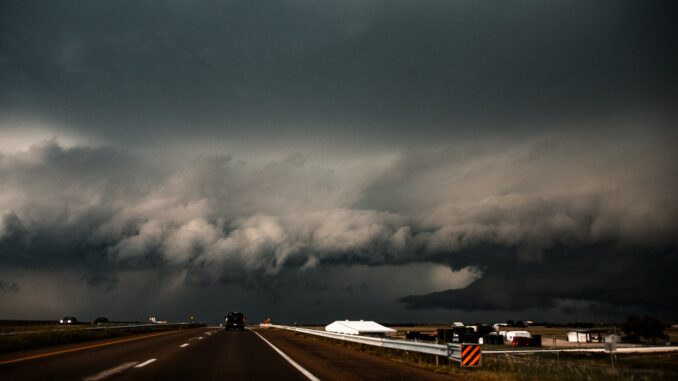
Each year storms cause devastating effects, including loss of life, catastrophic damage to infrastructure and property, and major erosion. This results in adverse economic impacts that often last for many years in the future. Early warning of an incoming storm is crucial for disaster risk reduction since it allows you to prepare and take quick, effective action. This helps prevent loss of life and reduce economic impacts often associated with hazardous weather events like severe storms.
Additionally, storms can cause a lot of damage to a construction site, even with the workers not around. Uncontrolled stormwater runoff from a construction site can cause massive erosion and significantly affect estuaries, rivers, and lakes. Proper planning for stormwater pollution at your construction site can help you obtain the necessary permits for stormwater compliance. Besides staying on top of the weather forecasts, you should be able to read Mother Nature’s signals to tell when a storm is on the way. In this article, we’ll look at the most common signs of an incoming storm:
1. Large, puffy cumulus clouds
Giant, puffy cumulus clouds are one of the most common signs of an imminent thunderstorm. These clouds form and grow faster during the day as the weather heats up and warm, humid air rises to meet the cooler air above, triggering condensation. They usually develop more vertically than horizontally into the massive round and bumpy clouds. They later develop into dark, anvil-shaped clouds resulting in severe thunderstorms accompanied by lightning. When black clouds form, the outside also gets darker, indicating you need to get inside or seek shelter if you’re outside.
2. Drastic Temperature Change
A drastic drop in temperature is another major sign of an incoming storm. A storm could be approaching if there are dark, puffy clouds outside, and it suddenly gets cold. When a storm is coming, most people with arthritis report feeling severe joint pain due to the drop in temperature. Additionally, cows gather and lie together in their pasture as the weather cools due to an incoming storm. So, apart from suddenly feeling cold, you can check how the cows behave to confirm if bad weather is coming.
3. Sudden Changes in Wind Direction
Besides the formation of cumulus clouds and a drastic temperature drop, a storm is likely to occur also if you notice a sudden change in wind direction. Normally, wind moves from the west to the east when the weather is good. However, the weather could soon be stormy if the wind suddenly changes direction and moves from east to west. You can check the clouds or use a flower petal or grass to determine the direction of the wind. Apart from changing the direction, winds also tend to be stronger when the storm is soon to kick in.
Endnote
If you notice any of the signs mentioned above and you’re outside, you have plenty of time to seek shelter somewhere safe, dry, and comfortable. If you’re caught in a storm while driving, pull over somewhere you can safely get shelter or stay in the car and duck down while covering your head and hands with a blanket in case the storm damages your windows.
Support Northern Colorado Journalism
Show your support for North Forty News by helping us produce more content. It's a kind and simple gesture that will help us continue to bring more content to you.
BONUS - Donors get a link in their receipt to sign up for our once-per-week instant text messaging alert. Get your e-copy of North Forty News the moment it is released!
Click to Donate